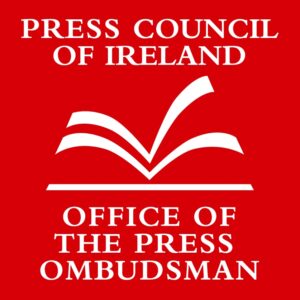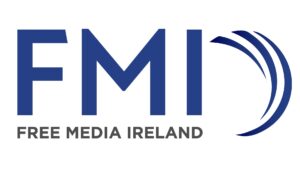Step 1 – Decide how much you can borrow
THIS is the first question everyone asks – and one of the most important. It’s always good to know how much you can realistically afford. Your first port of call is to talk to a Bank of Ireland Mortgage Advisor. They’ll be able to indicate how much you can borrow based on your earnings, your current financial commitments and any savings you may have. If you are borrowing with someone else, the amount you can potentially borrow is based on your combined income and outgoings.
Step 2 – Work out what you can afford to repay
TO find out roughly how much you can afford in monthly repayments, you need to compare your incoming salary with your outgoing expenses. Your income is your monthly salary and any other regular income you and/or your partner receive. Your expenses will include all your outgoings, things like, personal loan repayments, utility bills, phone bills, food, school fees, car costs, going out and so on.
The figure you get when you subtract all of your expenses from your income is your disposable income, or what you can afford to repay each month, you should ensure that this surplus income is sufficient to meet all your requirements.
Some good news is that as a First Time Buyer you will be eligible for Mortgage Interest Relief. Mortgage Interest Relief or Tax Relief at Source (TRS) is tax relief that you can claim on the interest you pay on your mortgage.
Once you’ve applied for it from the Revenue, it will be lodged into the account you nominated each month. Under the supplementary budget in April 2009 First Time Buyers can claim Mortgage Interest Relief for up to seven years. Up-to-date details can be found on www.revenue.ie.
Step 3 – Determine how much savings you need for the total cost of buying the property
BANK of Ireland will lend up to 92 per cent of the property value or price depending on your circumstances and the particular property. This means that you will need to have a minimum of 8 per cent of the property value or price saved for your deposit.
In addition to a deposit, your budget should include some initial costs like: legal fees, the valuation report or surveyors report, taxes, home insurance and your mortgage protection policy. You may also need to include a budget for furniture and appliances.
Step 4 – Choose what professional services you will need
SOLICITORS are one of the main professionals needed in the home buying process. They perform conveyancing which involves researching, documenting and legally transferring property ownership. Solicitor fees or legal fees can vary and it’s a good idea to agree the fee with your solicitor before you purchase your property.
You will also need a valuation report and/or a surveyor’s report. A valuation report will be one of the conditions of loan approval and a satisfactory valuation report is needed by Bank of Ireland to proceed with your mortgage. In some cases we may also request a Surveyor’s report particularly if the property you are buying is older.
It is worth considering getting a surveyors report completed on any property you are buying as a surveyor’s report is a lot more detailed and may spot faults that aren’t easy to see.
Step 5 – Decide on the type of mortgage to suit you
MORTGAGES come in many shapes and sizes so it’s important to find the right fit for you. Your Mortgage Advisor can help you choose the type of rate that will best suit you. Generally speaking you can choose from fixed, variable or split rate loans.
*A fixed rate means that your repayment will not change for the duration of the fixed rate period you have chosen. Many people choose fixed rates to give them the security of knowing exactly what their repayments will be for some time ahead. When a fixed rate period comes to an end, you can generally choose between another fixed rate or a variable rate.
* Variable rates are influenced by market interest rates. These can go up or down during the life of the mortgage, hence the term variable.
* With a split rate you can have the comfort of a fixed rate and variable rate management combined. You can structure your mortgage whichever way you want; for example, 50 per cent at a fixed rate and 50 per cent at a variable rate for say five years.
Step 6 – Make sure you’ve got it covered
HOME Insurance – Your home is possibly the biggest investment you’ll ever make so it stands to reason that you’ll want to protect it. Before your mortgage cheque issues you’ll need to arrange building insurance, which should cover the cost of rebuilding you home should it be damaged by fire or flood for example.
You should consider opting for a more enhanced building and contents insurance also which will cover both the cost of a rebuild and the cost of furniture, carpets and so on. If you are purchasing an apartment, check to see if building insurance is part of your annual maintenance fees.
Life Assurance – You are required by law to take out life assurance for the amount and term of your planned mortgage. Then should you die before your loan is repaid, the outstanding debt is automatically paid off.
Mortgage repayment cover – this is designed to cover your mortgage repayments for up to 12 months should you be unable to work as a result of an accident or sickness or if you become involuntarily unemployed.
Step 7 – Apply for your mortgage
Mortgage Advisors in any Bank of Ireland branch will help you through every stage. Here is an idea of the stages of the mortgage:
1. Drop into your local branch – where our Mortgage Advisors will be happy to complete an application for you. Ideally you should bring in your most recent payslip/ P60
2. Letter of offer – If your application is approved you will receive a letter of offer, usually within three working days.
3. Choose your solicitor – and advise your mortgage provider of their contact details. Your Mortgage Advisor will then send a copy of the Letter of Offer and a pack to your solicitor containing all the legal forms.
4. Booking deposit – You will need to pay a booking deposit to the estate agent handling the sale of your property or the solicitor for the vendor, this will usually secure it for between 21 – 28 days, so you can progress your mortgage application.
Your mortgage advisor will also arrange a valuation on the property from your valuer.
5. Review and sign – Review the Letter of Offer and all documentation with your solicitor. Once you’re sure you can meet the conditions of the loan, sign and return it to your Mortgage Advisor along with all the supporting documentation.
6. Protection – Arrange your home insurance and life assurance. Allow plenty of time for unforeseen delays with arranging your insurance.
7. Deposit – On exchange of contracts you will need to pay your non-refundable deposit. This commits both parties to the sale.
8. Closing – On closing the deal, your lender will send your mortgage cheque to your solicitor and then you can pick up the keys to your new home.
If you are planning on buying your first home, Bank of Ireland has put together a very special mortgage package specifically designed for first time buyers. Our package includes:
* A dedicated 1bn euro first time buyer fund
* Market leading mortgage rates – Our First Time Buyer 1 year fixed rate is just 2.8 per cent APR
* If you take out your mortgage with us we’ll give you 1,000euro* to spend on your new home
* Fast mortgage approval with a formal offer usually within three working days
* Great offers on home insurance and mortgage repayment cover
If you are considering buying your first home, we at Bank of Ireland, 94 O’Connell Street are on-hand to talk you through your financial choices.




